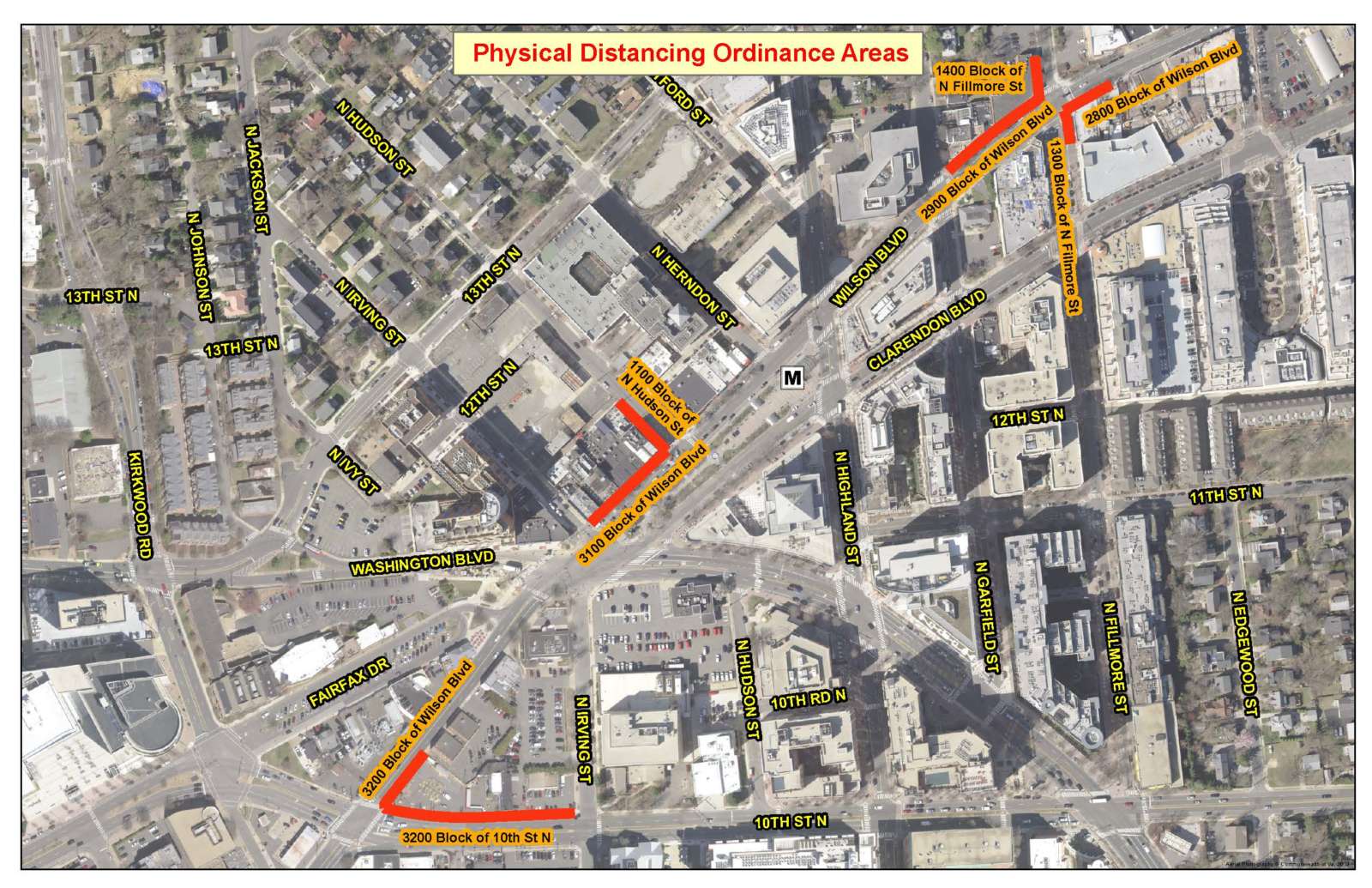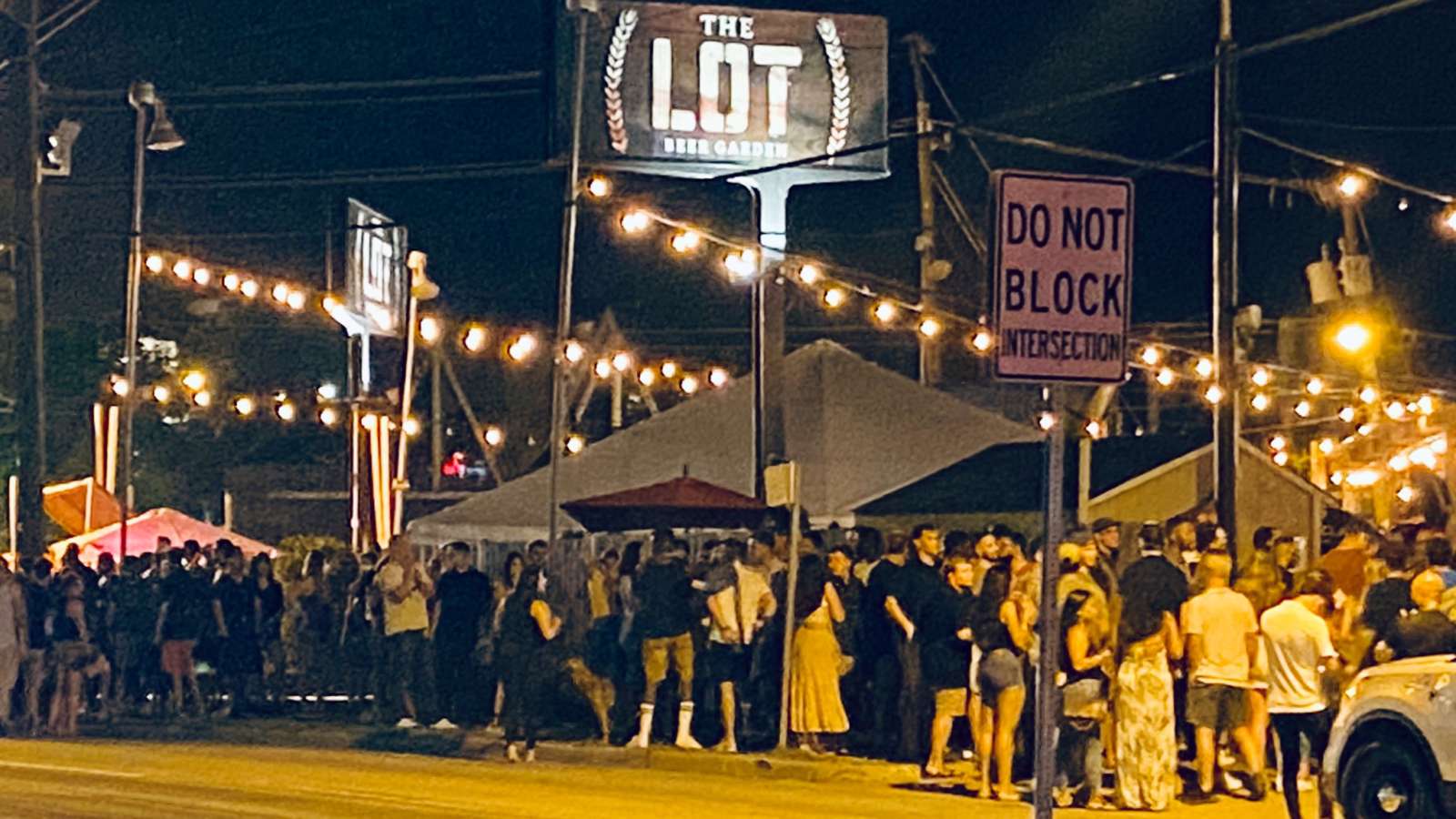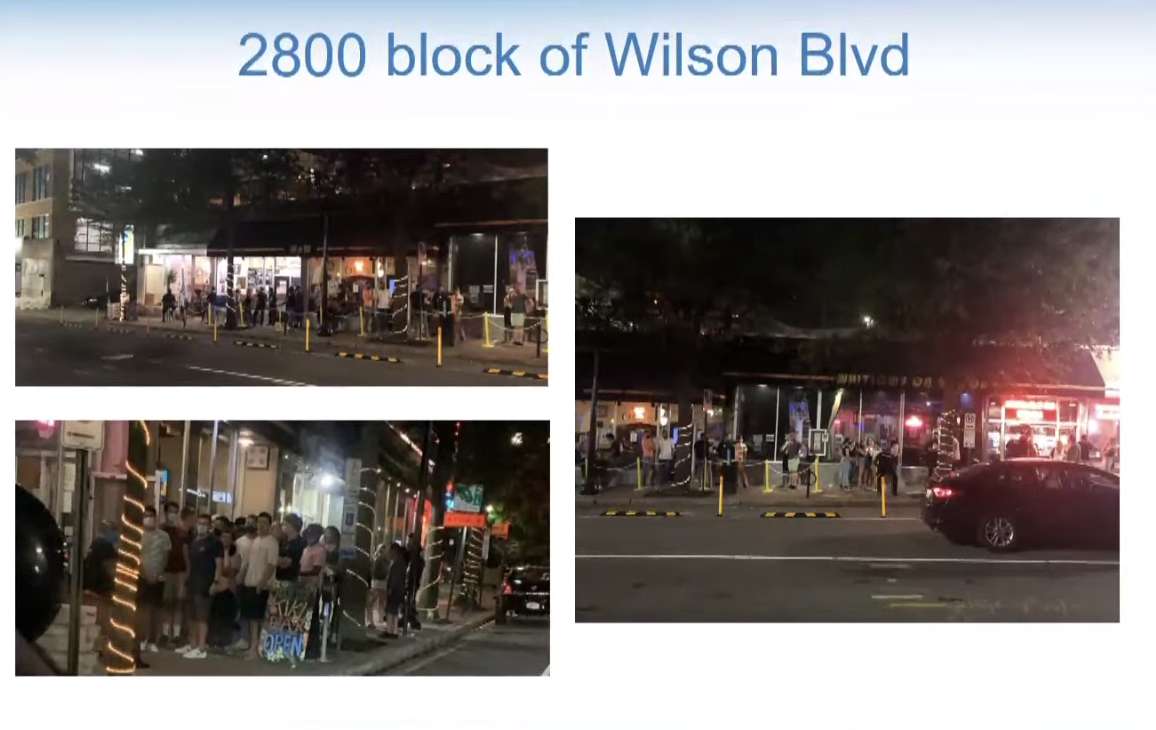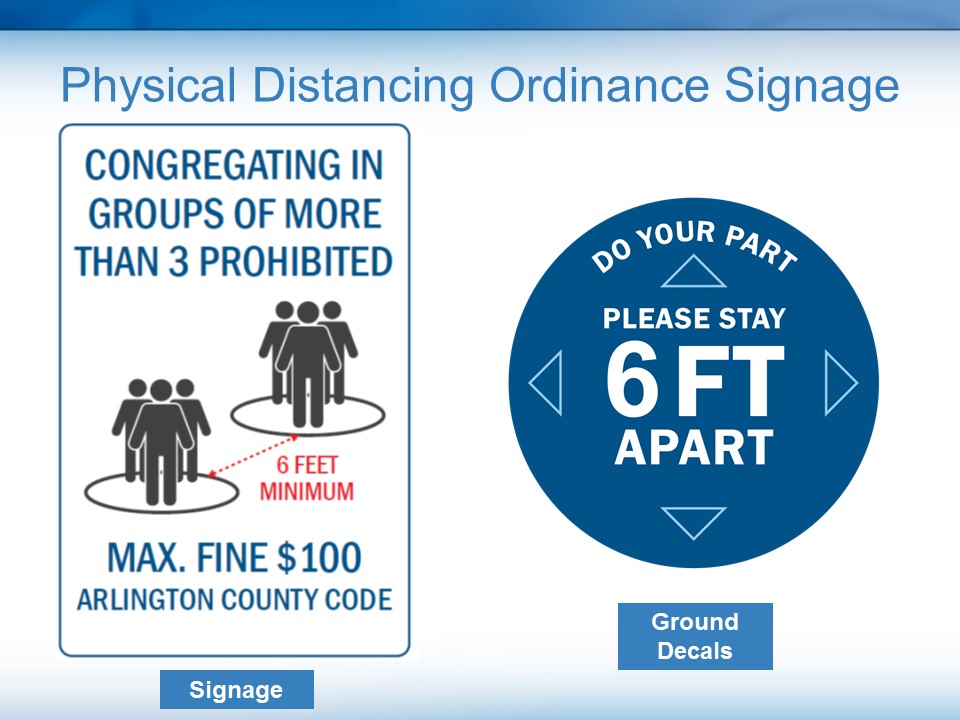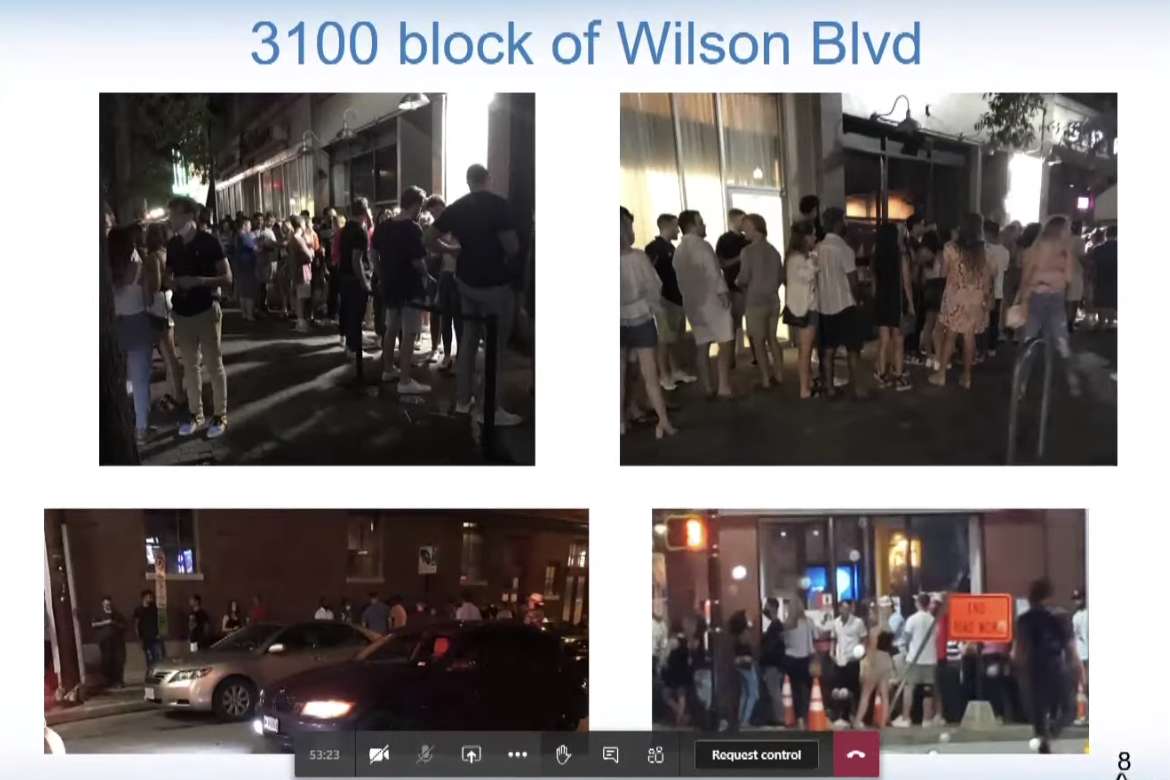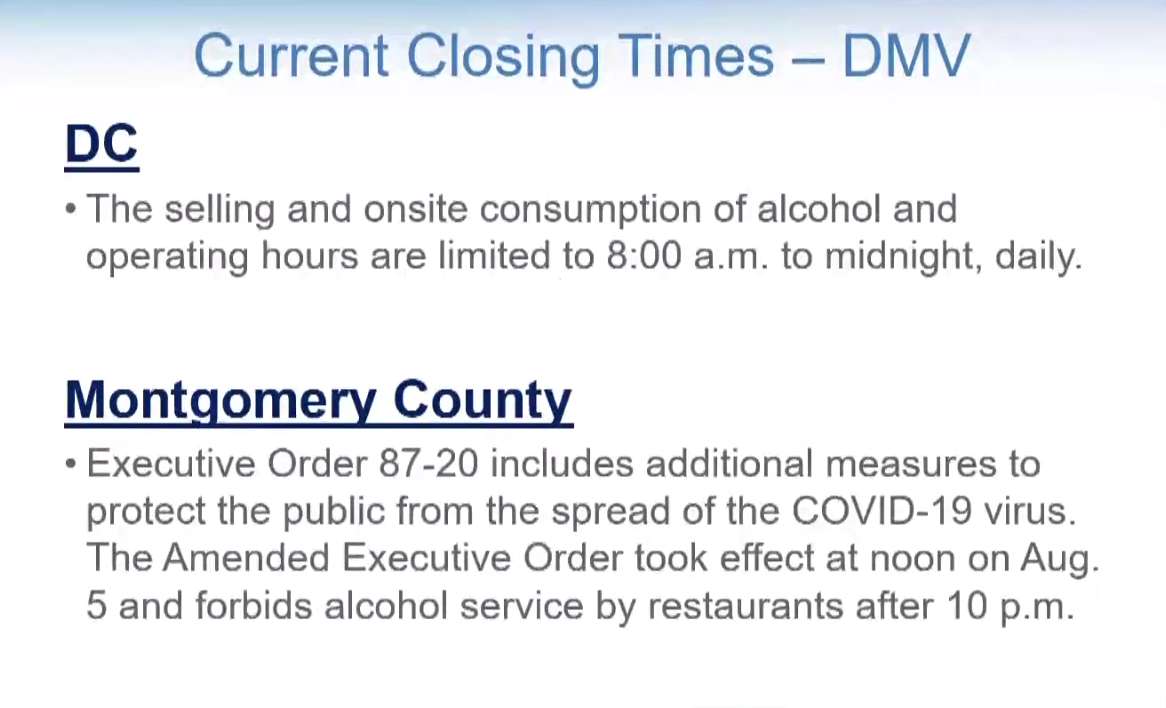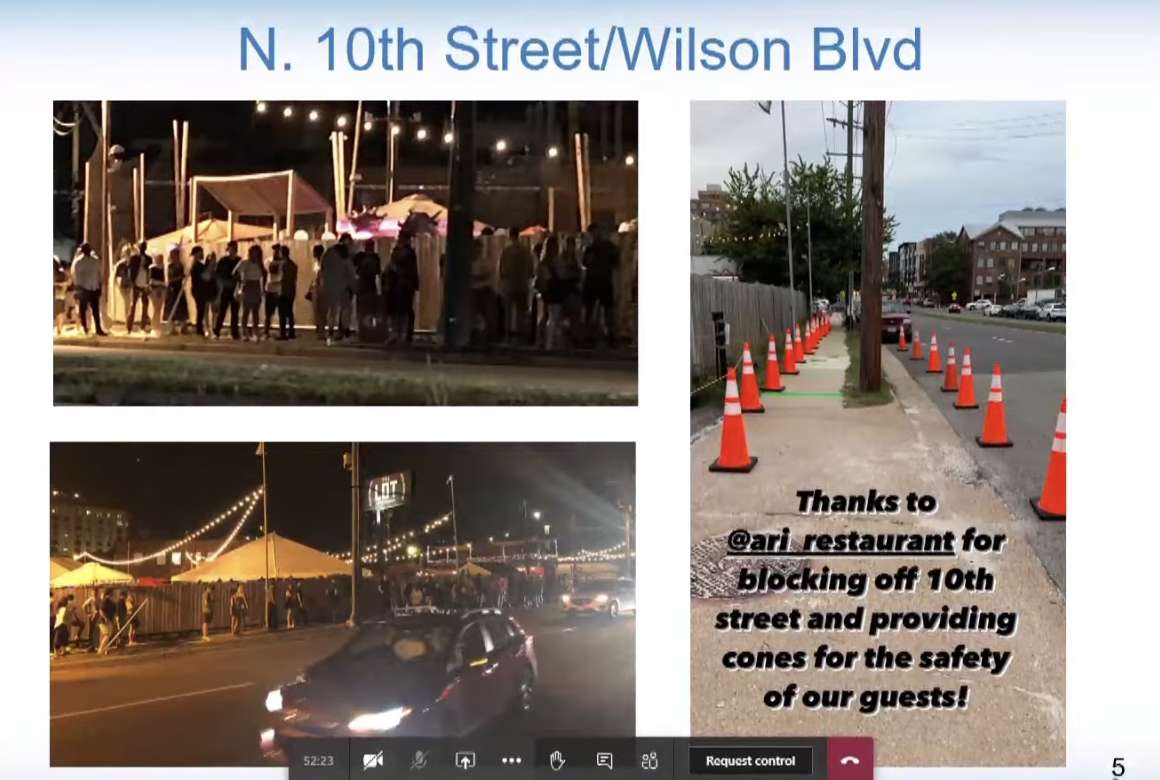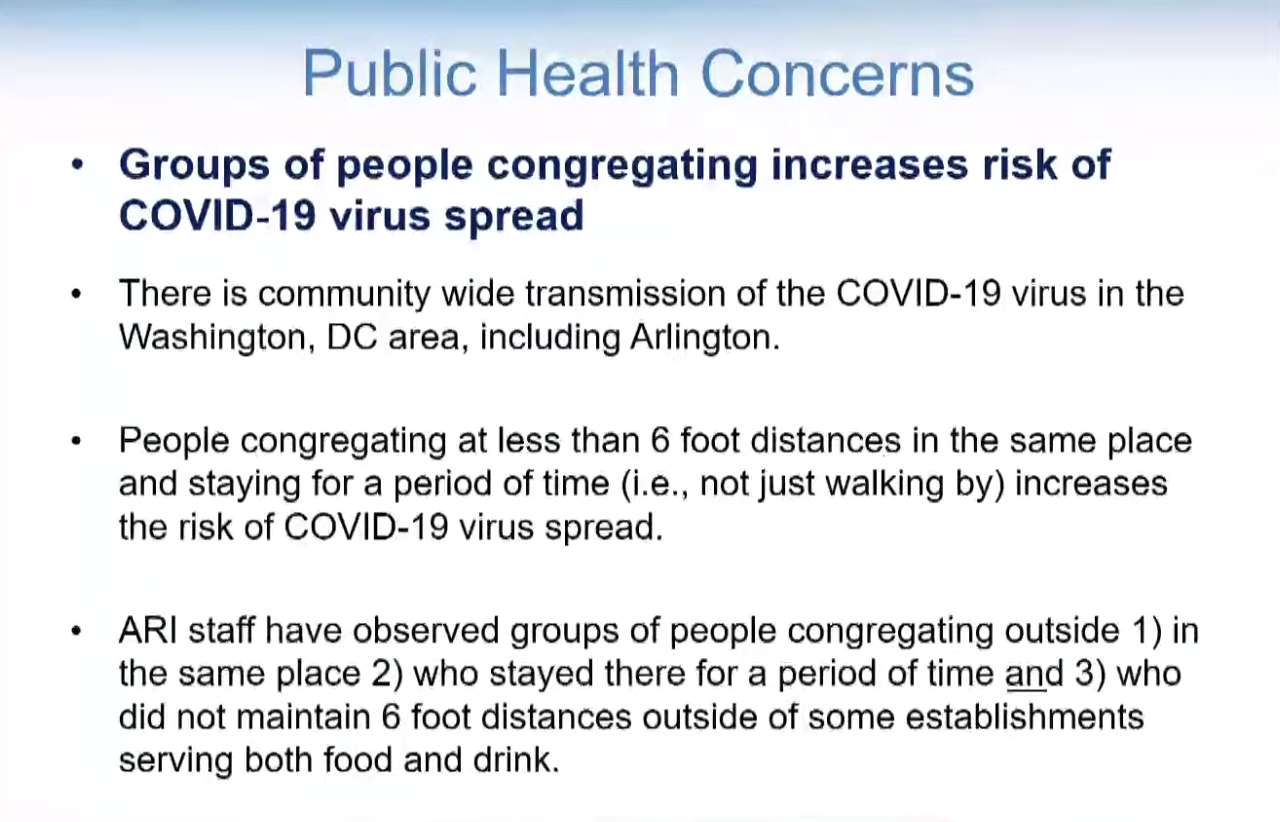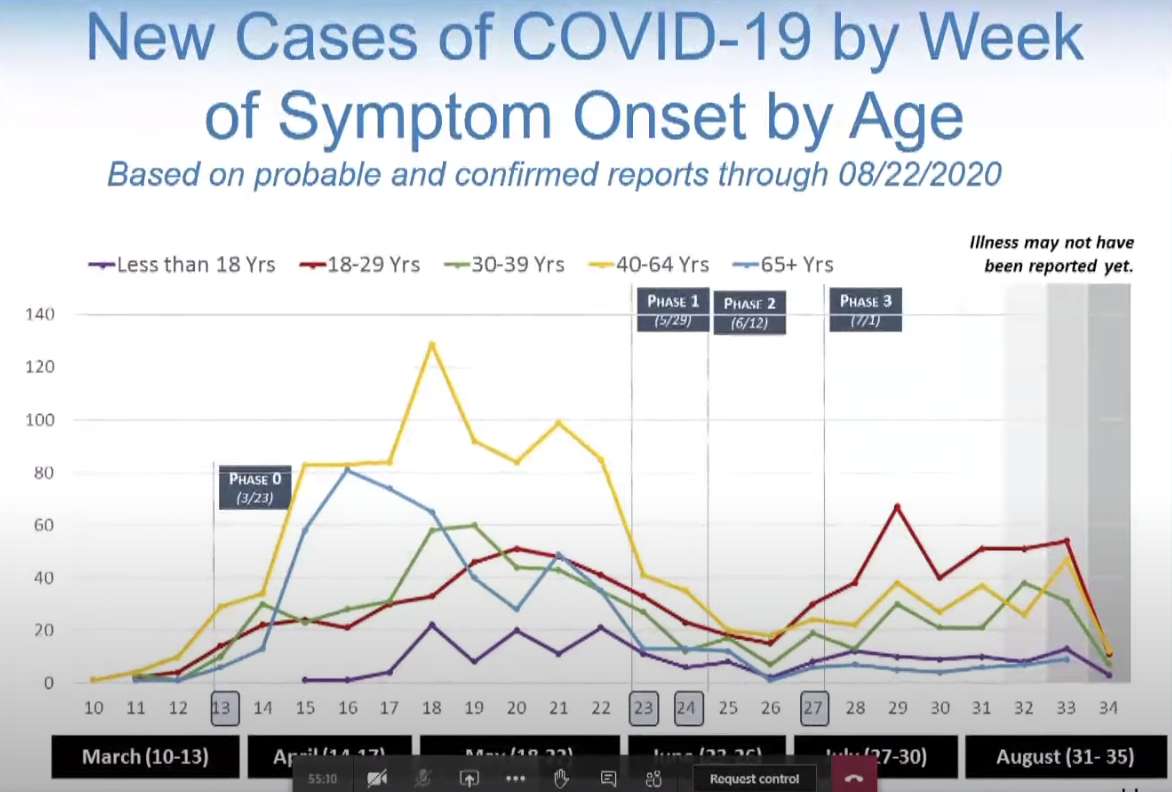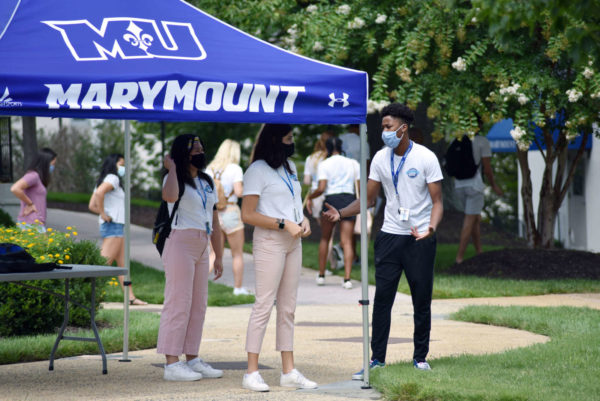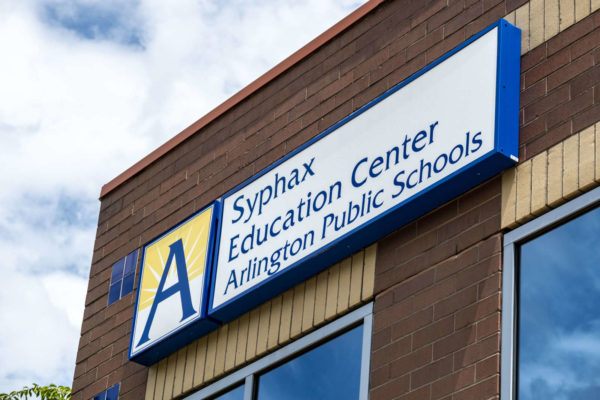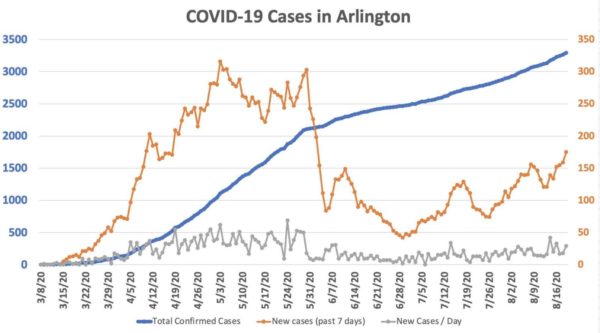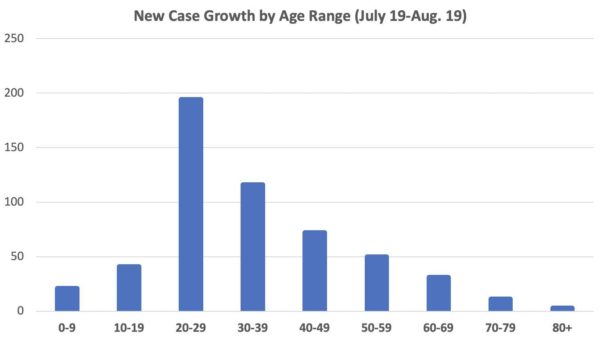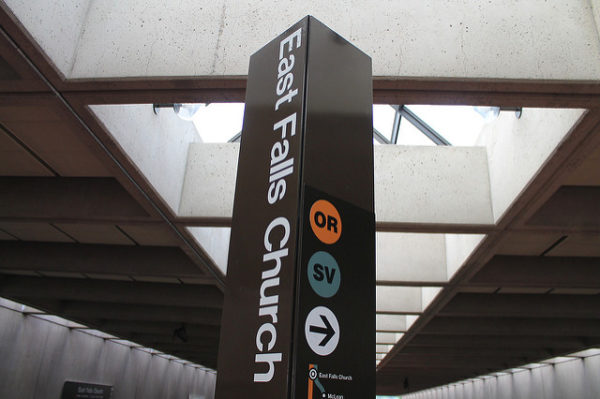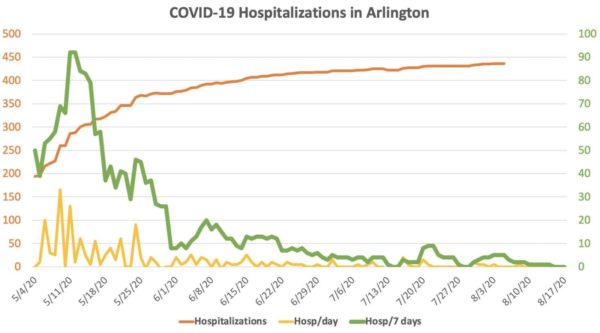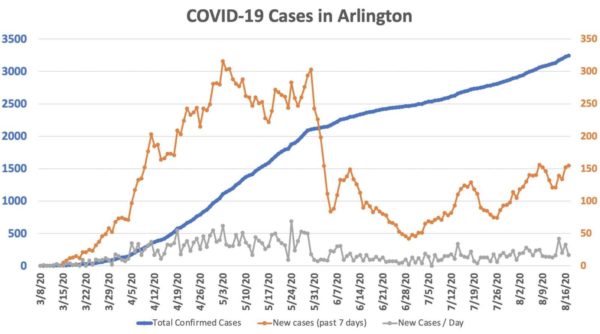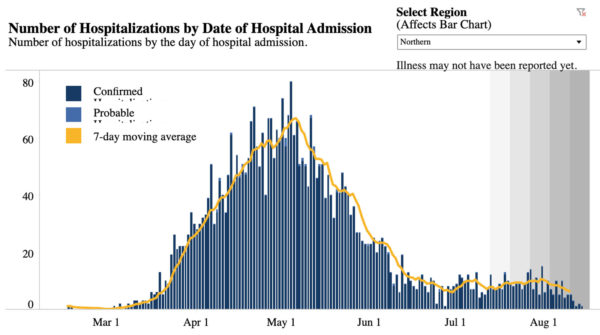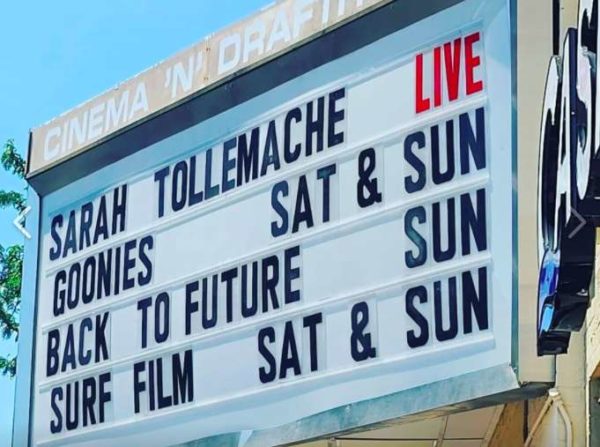(Updated at 3:15 p.m.) Starting tomorrow, standing in the wrong place with the wrong number of people could land you a warning from police.
Arlington County says it will begin enforcing its emergency sidewalk crowding ordinance — which makes standing in a group of more than three in designated zones a traffic infraction — on Friday.
This weekend verbal and written warnings will be issued. After that, police will start issuing fines of up to $100.
“We are serious about this,” Arlington County Manager Mark Schwartz told members of the County Board on Tuesday. “I remain deeply frustrated with what I’m seeing in the community… This is not a game when you’re dealing with the public’s health.”
At issue is groups of young, often maskless bargoers bunched up in lines, waiting to enter popular — but capacity constrained — nightlife spots in Clarendon. Photos and first-hand accounts of the lines have circulated on social media, leading to an outcry that the Board responded to with an emergency ordinance passed on July 31.
The ordinance limits groups standing in line to no more than three people, spaced at least six feet apart from other groups and people in line, in certain areas.
The first phase of implementation includes four line-prone stretches in which the distancing will be enforced, identified via the county’s online social distancing complaint form, county staff said. There will be additional phases in the coming weeks to add new areas, including in portions of Crystal City, Schwartz said.
Police are placing signs and sidewalk markers in areas where the ordinance is being enforced, the County Board was told.
Thus far, efforts to get those in lines to distance to the county’s specifications have been met with mixed results: some compliance and some defiance.
“We have have seen quite a bit of defiance and hostility towards the security staff and officers, who are being flat out ignored,” said Arlington County Police Department bar and restaurant liaison Jim Mastoras. “We’re trying our best to keep the lines apart and keep people separated, as they need to be.”
Mastoras noted that businesses have been trying to comply with the rules. Outdoor beer garden The Lot, a frequent subject of photos of alleged overcrowding this summer, has two employees just assigned to monitoring the line, he said.
In addition to pandemic-era capacity restrictions, Mastoras said that lines have become an issue due to a rush of patrons into the Clarendon area between 10 p.m. and 2 a.m., which may or may not be linked to the fact that D.C. and Montgomery County have stopped alcohol sales after midnight and 10 p.m., respectively.
“Over the past few weeks, we have seen an influx of patrons into the Clarendon area,” he said.
The ordinance is not without its critics, who question its implementation and prioritization over other public health risks.
“The ordinance appears to criminalize common behaviors: A plain reading of the ordinance would appear to prevent a family of four from walking down one of these signed sidewalks together without maintaining 6′ of distance between all family members, including small children,” wrote Arlington Transportation Commission Chair Chris Slatt earlier this month.
Schwartz called that line of criticism a “red herring,” suggesting that is not how the ordinance will be enforced.
The Arlington Chamber of Commerce, meanwhile, is calling for the ordinance to be scrapped, citing concerns about enforcement and equity.
“The hastily developed ordinance has led to confusion and presents enforcement challenges,” the Chamber wrote this week. “The Chamber will continue to advocate that the County Board abandon this ordinance and find alternative, more constructive ways to promote social distancing.”
On the health side, experts agree that standing in line outside presents a risk, though it’s a risk that’s lower than equivalent behavior indoors.
Why, one may ask, are groups of more than three standing outside now prohibited, while larger groups are able to dine and chat maskless around a table inside restaurants? The latter is widely considered to be riskier behavior, albeit behavior that’s less likely to be photographed by those walking by.


